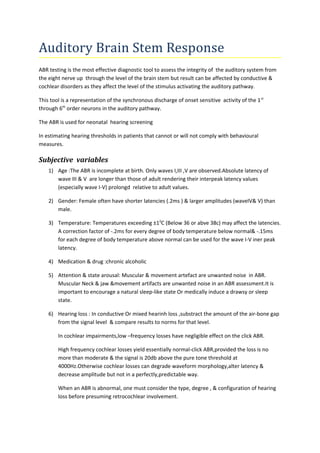1) Auditory Brain Stem Response (ABR) testing is used to assess the integrity of the auditory system from the eighth nerve through the brain stem.
2) ABR represents the synchronous neural activity in the auditory pathway from the first through sixth order neurons in response to click stimuli.
3) Several factors can affect ABR results including age, gender, temperature, medications, attention, hearing loss type and degree, stimulus variables like rate and intensity, and recording parameters.

